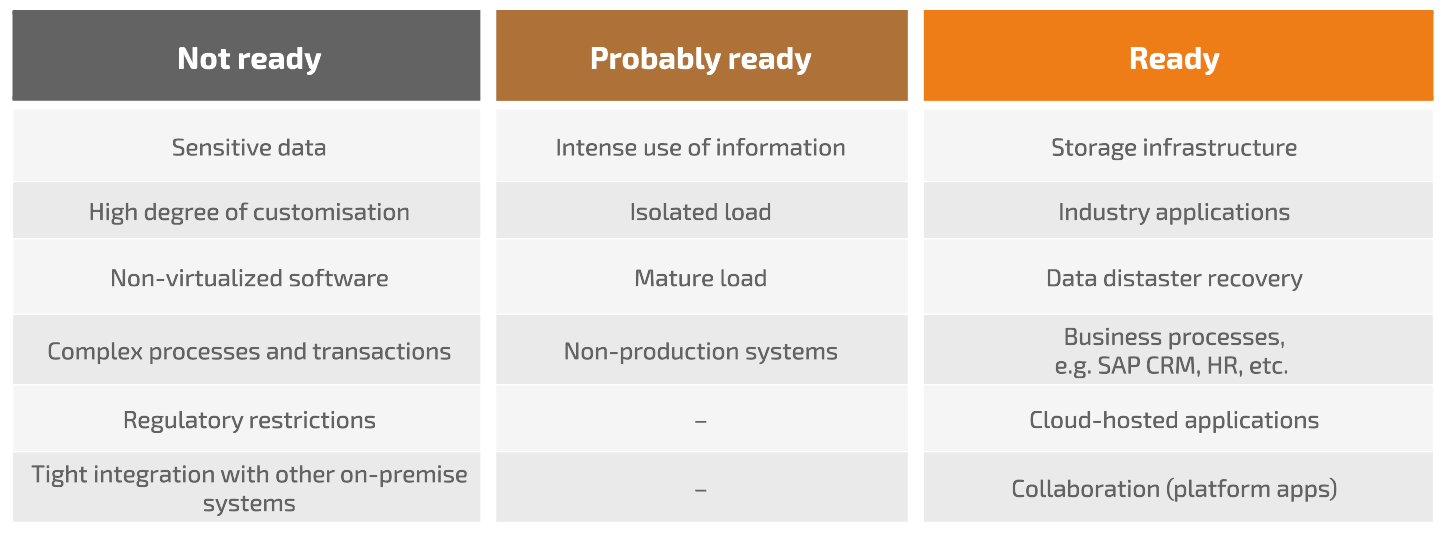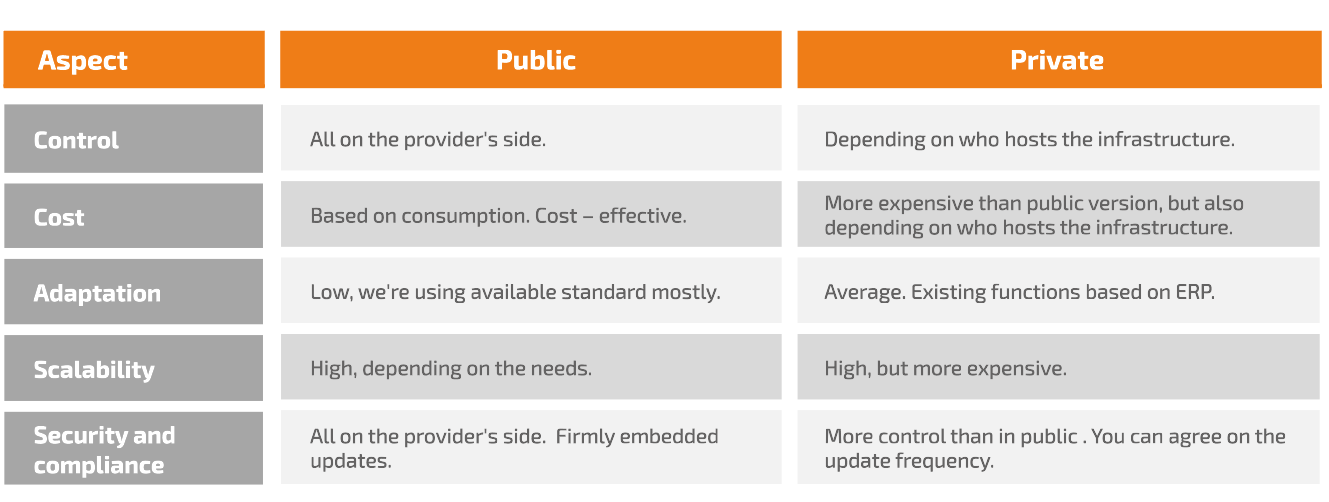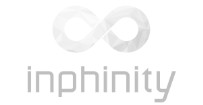Migration to SAP S/4HANA – Q&A with BPX expert Maciej Gieracha, responsible for comprehensive SAP S/4HANA software implementations in enterprises

Justyna Cepińska
Reading time: 18 min
Maciej Gieracha
Reading time: 18 min
 Date: 12 August 2024
Date: 12 August 2024In today’s rapidly changing technological landscape, organizations have to keep pace with the demands of digital transformation to remain competitive. SAP, a leader in ERP platforms, continually innovates to provide companies with the best tools for optimizing business processes. The latest version, SAP S/4HANA, is a true revolution that not only modernizes technology but also introduces new functionalities, allowing enterprises to fully leverage their potential. The planned end of support for older SAP ERP versions in 2027 makes migration to SAP S/4HANA not only advantageous but also necessary for companies wanting to avoid the risks associated with outdated systems. Now is the best time to invest in your company’s future by transitioning to SAP S/4HANA and reaping strategic benefits.
The transformation to SAP S/4HANA is a complex and intricate process that requires careful preparation, a well-thought-out strategy, and specialized knowledge.
In this article, Maciej Gieracha, an SAP S/4HANA expert from BPX S.A., will answer the most frequently asked questions and concerns regarding migration to SAP S/4HANA. He will also share his experience, highlighting how implementing the new system version can enhance an organization’s operational efficiency.
What drives the need for transformation to SAP S/4HANA, and why is it worth considering now?
Software development cycle
The SAP ERP system, known for its innovation, is continually evolving, and in-memory databases have been an integral part of SAP software for several years. The latest version, SAP S/4HANA, debuted in 2016 and has since undergone numerous updates, starting with version 1709. In 2027, SAP will end support for the current ECC version of the system, which means users have less than three years to fully leverage the existing version. After this date, although the system will still function, its usage will become more limited and costly, and it will not include the latest technological updates, which are being developed exclusively for S/4HANA.
R&D: What is the impact of new technologies and updates on competitive advantage?
Implementing the latest technologies and updates in ERP systems, such as SAP S/4HANA, allows enterprises to achieve significant competitive advantage. These innovations enable full automation and streamlining of business processes, resulting in increased efficiency and operational flexibility. When the older version of the system is no longer actively supported and only maintained, a company risks falling behind and losing opportunities for further development and investment in new solutions. This means that continuing to operate on an outdated system can lead to technological and operational stagnation, negatively impacting the company’s market position.
Process optimization with SAP S/4HANA: why is it worth investing now?
In today’s world, where technology is advancing rapidly, keeping up with the latest trends is crucial for participating in digital transformation. Among the most important trends are:
- Software as a Service (SaaS): Transitioning from a traditional product model to a service model, where software is delivered as an online service, allowing for flexibility and scalability without the need to manage infrastructure.
- User Experience (UX) and User Interface (UI): Focusing on creating positive user experiences and intuitive, modern interfaces that ensure easy and efficient use of platforms across various devices.
- Cloud solutions: Enabling instant access to data and applications from anywhere, increasing operational flexibility and efficiency.
- Artificial Intelligence (AI): Enhancing productivity by automating routine tasks, optimizing decision-making processes, and providing quicker access to essential information, which enables more efficient and effective business actions.
In the latest software versions, such as SAP S/4HANA, these aspects are thoroughly addressed to support enterprises in optimizing processes as effectively as possible. SAP S/4HANA integrates these modern approaches, offering advanced features and technologies that contribute to further business development and innovation.
How can early decision-making regarding migration to SAP S/4HANA increase your chances of success?
Migration to SAP S/4HANA is a complex and time-consuming process that requires not only expert knowledge but also adequate resources to proceed smoothly and efficiently. Therefore, if you are considering a transformation to the new system version, it is advisable to seek the help of a trusted implementation partner now and schedule the necessary timelines to complete the project before 2027.
According to Gartner’s analyses, by 2025, many consulting firms worldwide may not be able to handle even half of the projects requiring completion by 2027 due to the enormous workload. Making an early decision on migration will help avoid the risk of delays and ensure a smooth transition to SAP S/4HANA.
Strategic planning for migration to SAP S/4HANA: tips for large and small businesses
Planning a migration to SAP S/4HANA should follow a two-pronged approach. First, it is crucial to care about collaboration with a trusted and experienced consulting firm in advance. Second, the implementation process should be tailored to the company’s schedule and current capabilities. Large companies, which often have their IT teams, typically view the migration to SAP S/4HANA as an integral part of their long-term development strategy. In contrast, small and medium-sized enterprises often require external support to manage effectively the change process.
Regardless of the company’s size, it is crucial to consider available financial and time resources to plan the migration in a way that ensures a smooth process from both technological and business perspectives. In the end, the migration process should be an added value rather than a problem.
What are the key benefits of transitioning to SAP S/4HANA?
Migrating to SAP S/4HANA offers numerous benefits that can vary depending on the specifics and needs of each enterprise. It is crucial to understand the company’s current technological state, target architecture, and business goals before starting the migration process. Only then will the implementation of the new version bring optimal value. Here are universal benefits that may be significant for any organization in the context of transitioning to SAP S/4HANA:
- Advanced performance and speed. SAP S/4HANA leverages modern in-memory technology, accelerating data processing and real-time analysis. This translates to faster reporting, rapid decision-making, and enhanced operational efficiency.
- Simplified system architecture. The new version features a streamlined database structure along with simplified processes and applications, reducing system complexity and facilitating easier management and integration with other applications and systems.
- Improved usability and user experience. SAP S/4HANA provides a modern and intuitive user interface, enhancing user experiences and increasing work efficiency through a simpler and more user-friendly working environment.
- Increased flexibility and scalability. The cloud-based nature of SAP S/4HANA allows for flexible adjustment of solutions to changing business needs and easy scaling of resources as the company grows.
- Optimized business processes. New functionalities and advanced analytical tools in SAP S/4HANA enable better management of business processes, automation, and integration, contributing to increased operational efficiency.
- Enhanced compliance with regulations and standards. SAP S/4HANA supports the latest rules and regulations, helping in maintain compliance with industry standards and provisions.
- Support for innovation and new technologies. Transitioning to SAP S/4HANA allows companies to integrate with the latest technologies, such as artificial intelligence, the Internet of Things (IoT), and big data analytics, supporting further development and innovation.
What else will your company gain from migrating to SAP S/4HANA?
Speed
The functionalities introduced in SAP S/4HANA accelerate system performance and decision-making by providing real-time data access. Technological innovations, such as data compression, resulted in reduced data volumes and more clear tables, eliminating the need for patch jobs. This enables reports and analyses to be generated almost instantly. For example, we conducted a test comparing report generation times between ECC and S/4HANA systems, and it was found that reports in S/4HANA were 90% faster, significantly improving the efficiency of our operations.
Analytics
SAP S/4HANA is a powerful analytical tool capable of processing large volumes of data. Through integration with SAP Analytics Cloud, users gain access to over 1,500 predefined reports, as well as the ability to plan simulations and versioning, which supports the verification and scaling of business strategies. Rapid analysis results and advanced planning capabilities contribute to better management and forecasting of future business needs.
User Interface (UI) and User Experience (UX)
New software versions often come with a refreshed application appearance and improved user experience. SAP S/4HANA is no exception. It features a modern design that provides better scalability across various devices. The interface structure has been simplified, replacing complex tree menus with clear tiles, which facilitates navigation and enhances user comfort.
Digital core
SAP S/4HANA represents the digital core of modern enterprise management. New functionalities, such as artificial intelligence, predictive analytics, and advanced expert practices, are available exclusively in this system’s version. The ECC edition will no longer receive new updates or innovations, which means that investments in technology development and new features are focused on SAP S/4HANA and the SAP BTP platform.
Migrating to SAP S/4HANA is a strategic decision that offers numerous benefits and enables your company to better leverage modern technologies, improving operational efficiency and providing a competitive advantage.
What are the SAP S/4HANA deployment models for companies?
SAP S/4HANA offers three primary deployment models that adapt to different needs and requirements of organizations. Here is a brief overview of each:
- on-premise,
- cloud,
- hybrid.
On-Premise
On-premise is the traditional model where the entire SAP S/4HANA infrastructure is installed and managed locally at the company’s premises.
- Management: by the company’s IT team or administrators, with possible support from external consulting partners.
- Control: companies have full control over the system, including configuration, security, and updates.
- Flexibility: it allows for customization to the specific organization’s needs but requires significant investment in infrastructure and IT resources.
Cloud
The cloud model assumes that the entire SAP S/4HANA infrastructure is hosted in the cloud.
- Management: SAP or the cloud service provider handles all system management, including updates, security, and scaling.
- Costs: requires lower investments in hardware and IT infrastructure, with payments typically on a subscription basis.
- Flexibility: it is easy to scale and adjust resources to changing needs, with quick access to the latest features and updates.
Hybrid
The hybrid model combines elements of both previous models: on-premise and cloud. There are two main variants:
Version 1:
- Infrastructure: part of the SAP S/4HANA environment is hosted in the cloud, while other components remain on local servers (on-premise).
- Benefits: it allows for gradual migration to the cloud while leveraging existing on-premise infrastructure. It enables cost optimization and flexible data management.
Version 2:
- Infrastructure: key functionalities and data may be stored in the cloud, while specific applications or critical processes are managed locally.
- Benefits: it combines the advantages of both models, allowing for better alignment with organizational needs and minimizing the risks associated with full cloud migration.
Summary
Each SAP S/4HANA deployment model has its unique advantages and challenges. The choice of the appropriate model depends on the company’s specific needs, IT strategy, and business goals. Companies can benefit from consulting with SAP experts to select the most effective implementation model and ensure a successful migration.
What are the differences between on-premise migration and cloud migration?
The choice of migration model to SAP S/4HANA depends on various factors and should be made after a detailed analysis of crucial aspects. The type of transformation is a matter of individual organizational needs, but it is important to consider the following elements when making a decision:
- nature of the business,
- organizational level within the company (willingness to take on risk),
- cash flow management (investment model vs. subscription model),
- awareness of implementation process management and commitment to optimization,
- willingness to invest in the development of new technologies.
On-premise migration
The on-premise model is a traditional solution typically chosen by companies that:
- Require full functionality and control: these companies want complete control over their infrastructure and data.
- Need extensive customization of the software: on-premises allows for greater flexibility in tailoring the system to the specific needs of the organization.
- Are satisfied with their current processes: stable companies that do not plan radical changes in their processes may prefer on-premise.
- Have limited willingness to take on risk: companies concerned about costly disruptions and risks may choose on-premise to avoid uncertainties associated with cloud data storage.
- Are large and currently use SAP systems: large organizations already using SAP and planning to continue their use may prefer on-premise for full, controlled integration.
- Want full control over their business: on-premise provides greater control over data management and security.
- Depending on scalability, flexibility, and innovation: the hybrid model, which can be implemented on-premise, allows for cloud integration, enabling the use of innovative solutions without giving up the traditional environment.
On-premise migration: 3 approaches to migrating to SAP S/4HANA
Within the on-premise model, there are three main approaches to migrating to SAP S/4HANA: Brown Field, Blue Field, and Green Field. Each system has its specific characteristics and applications, which may be suitable in different scenarios depending on the organization’s needs and goals.
Brown Field
The Brown Field model is a transformative approach that primarily focuses on migrating existing processes to the new SAP S/4HANA system. It is characterized by:
- Migrating existing processes: In this model, the organization moves its current processes and data to SAP S/4HANA, minimizing changes to the existing configuration.
- Implementing necessary changes: This includes only the changes required to adapt to the new version of SAP S/4HANA.
- Minor modifications: Changes are introduced only to the extent required by the new version of the system.
Who is it for?
This approach is beneficial for organizations that want to minimize disruptions to operations and leverage their current processes and configurations while adapting to the new technological environment.
Blue Field
The Blue Field model is an intermediate solution that combines elements of both the Brown Field and Green Field models:
- Partial use of existing processes: In this model, less than 50% of processes are retained from the current system, while the rest are adjusted to the new solution.
- Configuration adjustments: This involves both adapting existing processes to the new configuration and introducing new requirements and functionalities of SAP S/4HANA.
- Partial changes: Requires partial modifications and adaptations compared to a full transformation.
Who is it for?
The Blue Field model is suitable for companies that want to retain some existing processes but also introduce new solutions and features within the SAP S/4HANA system.
Green Field
The Green Field model focuses on implementing entirely new processes and functionalities in SAP S/4HANA:
- Minimal use of existing processes: This approach focuses on implementing the processes and features offered by SAP S/4HANA, with minimal emphasis on current processes.
- Best practices implementation: Utilizes best practices and mechanisms from SAP Model Company, which provides standardized solutions tailored to industry specifics.
- New implementation: Involves implementing new solutions from scratch, which may include a complete rethinking and redesign of business processes.
Who is it for?
The Green Field model is ideal for companies that wish to completely refresh their processes and take full advantage of the new SAP S/4HANA system by implementing standard solutions and industry best practices.
Choosing the appropriate migration model depends on the organization’s specifics, current processes, and strategic goals related to the SAP S/4HANA implementation.
Cloud Migration
The cloud model of SAP S/4HANA is typically intended for companies that:
- Are willing to limit process customization: In this model, companies may forego a high level of personalization in favor of using standard solutions and features provided by the cloud vendor. While process flexibility is reduced, this can be offset by other benefits.
- Are comfortable with less flexibility: Although cloud solutions offer less flexibility in process customization compared to on-premise models, they provide greater advantages in terms of implementation speed, scalability, and cost.
- Want to adapt quickly to changes: The cloud model enables faster responses to changes, new regulatory requirements, and dynamic business growth due to the flexibility of cloud solutions.
- Focus on best practices: Cloud versions of SAP S/4HANA are optimized for industry best practices, allowing companies to benefit from the latest solutions and standards.
- Are small or medium-sized: While large companies may also consider cloud migration, the cloud model is often more attractive for smaller and medium-sized enterprises due to lower initial costs and reduced IT infrastructure requirements.
- Have not used SAP until now: For companies that have not yet utilized SAP solutions, the cloud model is often the only option, as SAP may not offer on-premise licenses to new clients.
- Want to maintain control over their business: The cloud model provides control over data and applications but within a cloud-managed environment, which can be advantageous for companies that prefer to minimize local infrastructure requirements.
- Depending on scalability, flexibility, and innovation: Cloud models offer the ability to easily scale resources and access modern features and updates, supporting innovation and business growth.
Who is it for?
Migration to the cloud model is ideal for companies that want to leverage modern technologies but are willing to make some compromises in terms of flexibility and process customization. This model is also suitable for organizations that value rapid implementation, scalability, and lower initial costs associated with IT infrastructure.
Cloud migration – readiness level and comparison of private and public versions
Below is our proprietary assessment of readiness for cloud migration based on our collaboration with clients. This information should not be interpreted in a binary manner, as each of our transformations is tailored and follows an individual scenario.
What to choose?
The choice between private and public cloud versions depends on the specific needs and priorities of the company. A private cloud offers greater control and security but comes with higher costs. Conversely, a public cloud provides flexibility and lower costs but with less control and customization. It is important to thoroughly analyze the organization’s needs and readiness for migration to select the most appropriate cloud model.
Figure 1
Readiness level for cloud migration

Source: own compilation
The cloud version of SAP S/4HANA can be divided into two options: public cloud and private cloud. Below are the key differences between them.
Figure 2
Comparison of public and private versions – cloud migration

Source: own compilation
What methods and tools support the transition to SAP S/4HANA?
In the migration process to SAP S/4HANA, SAP offers a range of methods and tools, known as accelerators, that assist in the smooth transition to the new system version. Although implementing these tools is not mandatory, their application can significantly facilitate and expedite the migration process. Below are the most popular accelerators that can be used during migration:
SAP Activate Methodology
The SAP Activate methodology has been in the market for several years and is a comprehensive solution based on agile practices tailored for cloud systems. It is a phase-based approach encompassing preparation, planning, execution, and optimization. SAP Activate allows for early detection of positive and negative transformation effects and enables swift management of these effects. This methodology introduces new roles, project phases, ways of project management, and early engagement with the system. As part of the platform, SAP Activate aims to enhance the quality and success of every SAP project.
SAP Signavio Business Navigator
SAP Signavio Business Navigator is a platform for modeling and analyzing processes that SAP has learned or collected in its knowledge base. It features visualized graphs that are easy to analyze. This tool can be synchronized with your system to conduct analyses on where SAP deems processes to be optimal or where improvements are needed. It is available as a service within the BTP platform and SAP For Me.
SAP Migration Cockpit
SAP Migration Cockpit is a robust and concrete tool that provides a significant competitive advantage. It is a comprehensive tool offered by SAP that can support the migration of master data, transactional data and guide through all stages of various migrations. This user-friendly tool supports all stages of the process, including comprehensive error handling.
SAP Cloud ALM
Cloud Application Lifecycle Management (SAP Cloud ALM) is a tool that strongly supports all project activities, project management, and operational assessment. It is especially beneficial for project managers as SAP Cloud ALM is synchronized with the SAP Activate methodology and best practices, offering a substantial amount of predefined content that can be used throughout all project phases.
SAP BTP
The Business Technology Platform (BTP) is the ultimate repository where all these tools are housed – essentially a business-oriented version of an app store like Google Play. Many applications are developed and hosted on this platform, and SAP is committed to further developing this space. The goal is to consolidate all applications onto this platform.
What are the benefits of collaborating with a consulting company for SAP S/4HANA implementation?
Implementing a new version of the SAP S/4HANA system is a time-consuming process that requires proper preparation, a well-thought-out strategy, and expert knowledge. Partnering with a reliable and proven business partner, such as BPX S.A., allows for savings in time, resources, and, in the long run, financial costs that could arise from an improperly executed transformation. Specialists in SAP S/4HANA migration handle comprehensive implementation strategies, allowing employees to focus on their duties without reducing the company’s operational efficiency. Additionally, by leveraging the support of a consulting firm, you can benefit from unique know-how that ensures a smooth process.
At BPX S.A., we manage the comprehensive migration process to SAP S/4HANA. Our experts will help you choose a solution tailored to your needs and guide you through the entire process. Contact us to find out how we can support you in your digital transformation.
See recent writings
You drive us to strive for excellence in delivered projects and common challenges. Feel invited to read out blog that provides more in-depth knowledge on our implementations and experience. Read articles about digital business transformation, ERP and Business Intelligence systems. Discover interesting practical applications for future technologies.
- Blog
Navigating the challenges of introducing new software in a company – the role of technology and social dynamics
Contact us!
Let’s talk! Are you interested in our solutions? Our experts are happy to answer all of your questions.
 pl
pl



















